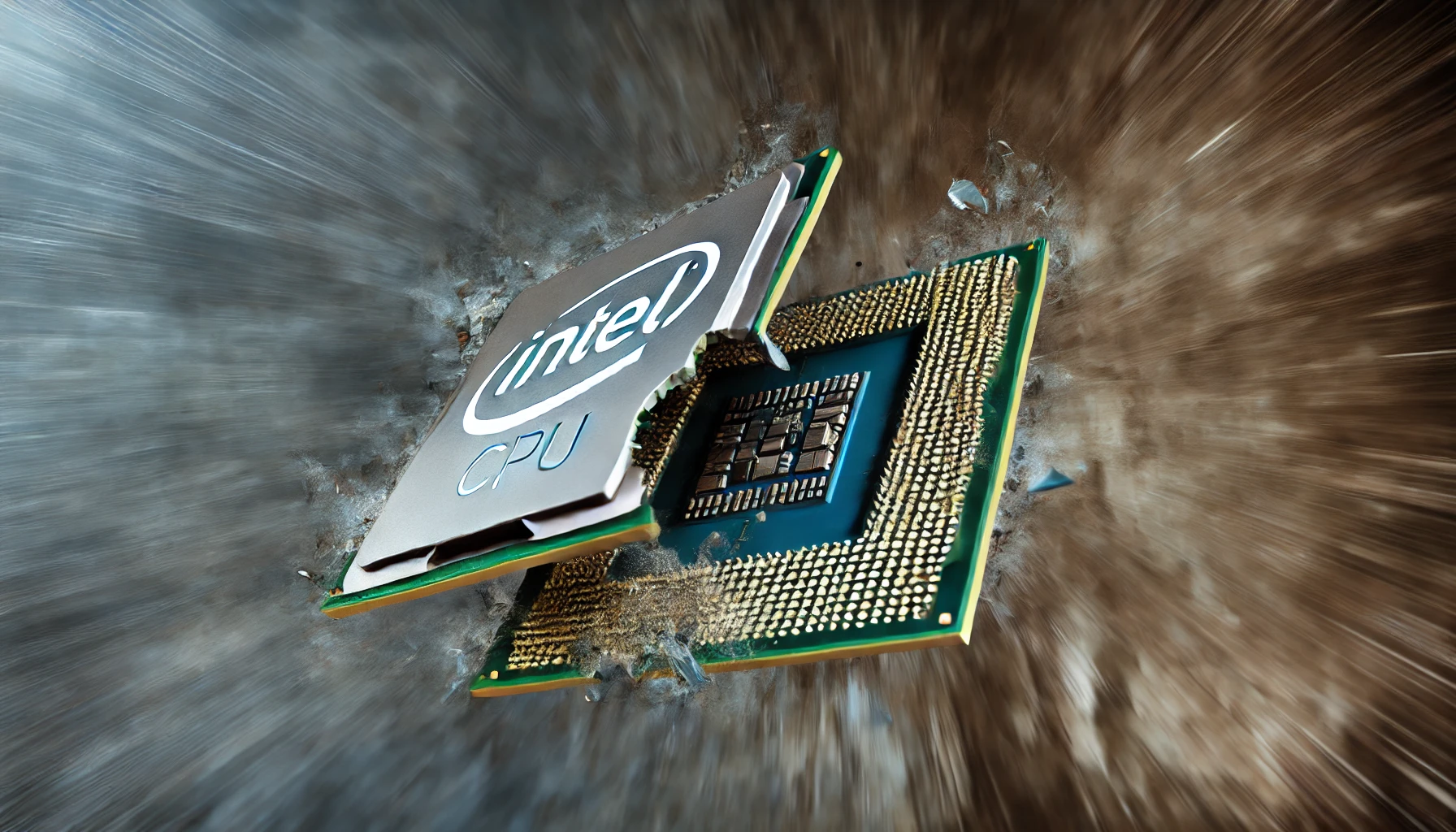In 1985, under the leadership of then-CEO Andrew Grove, Intel made the pivotal decision to exit the increasingly unprofitable memory chip (DRAM) market and concentrate its efforts on the burgeoning microprocessor business. The rest is history. Intel became the foremost CPU brand in the world, with the ‘Intel Inside’ sticker becoming a hallmark of quality and desirability in personal computers.
Fast forward to today, Intel finds itself at a second inflection point, facing significant challenges in its CPU business. The management needs a rescue plan—and fast.
The troubles have become increasingly apparent over the past two years, as Intel’s earnings have dropped significantly, with some quarters even showing losses. This trajectory is unsustainable.

How did Intel lose its pole position?
It’s not so much that Intel made catastrophic mistakes; rather, the landscape of chip design and manufacturing has transformed, making Intel less relevant. It’s reminiscent of what Nokia’s CEO Stephen Elop said in 2013: “We didn’t do anything wrong, but somehow, we lost.” Intel’s downfall can be attributed to the rise of ARM and TSMC.
Intel’s x64 architecture, based on CISC (Complex Instruction Set Computing), is designed to handle complex instructions. In contrast, ARM uses RISC (Reduced Instruction Set Computing), which is less ‘powerful’ in theory but faster and more efficient in practice.
The rise of mobile computing, especially after the introduction of Apple’s iPhone, validated the ARM architecture. The first iPhone, released in 2007, used ARM11 architecture because Intel chips consumed too much power and generated excessive heat. Imagine an iPhone powered by an Intel chip: it would last only a few hours and might even burn your hand during a call. ARM’s efficiency won the day.
Intel, like most chip companies in the 1980s, was vertically integrated, designing and manufacturing its own chips. Morris Chang, the founder of TSMC, recognized that while many companies were emerging as chip designers, they lacked access to high-quality manufacturing. Chang founded TSMC in 1987, focusing solely on manufacturing. This specialization allowed TSMC to advance faster, and today it is the world’s most advanced semiconductor foundry. If you want to produce the world’s leading chips, you turn to TSMC, which is why Apple and NVIDIA rely on them.
In essence, Intel’s designs became less relevant in the mobile era, and its fabrication technology lagged behind TSMC’s.
Intel’s problems extended beyond mobile computing. In 2020, Apple ditched Intel CPUs for its Macs, opting instead for its own M-series chips, which are designed by Apple using ARM architecture and manufactured by TSMC. Intel’s dominance in desktop and laptop CPUs is now being seriously challenged.
ARM’s computing power has also improved over time, and even servers are increasingly using ARM chips—this includes major cloud infrastructure providers such as AWS, Microsoft Azure, and Google Cloud.
Can Intel save itself, and if so, how?
Intel’s CEO, Pat Gelsinger, is crafting a plan to rescue the company. Intel has announced layoffs of 15% of its workforce and plans to reduce capital expenditures to $21.5 billion by 2025, a 17% decrease from this year. This plan includes selling Altera, the programmable chip unit it acquired for $16.7 billion in 2015.
Another part of the plan is to split Intel’s design and foundry businesses into two separate entities. The foundry will manufacture chips for external partners, with Intel aiming to become the world’s second-largest semiconductor foundry by 2030. The company is also focusing on AI chips, such as Intel 14A and Intel 18A. Intel recently scored a win with Amazon Web Services (AWS), which announced a multi-year, multi-billion-dollar partnership to develop custom AI chips with Intel.
Intel has also secured a $3.5 billion government grant to manufacture chips for the U.S. military, another avenue for continued government support to bolster U.S. semiconductor manufacturing capabilities.
The biggest news, however, is the rumor that Qualcomm might launch a takeover of Intel. This would make strategic sense, giving Qualcomm a foothold in both the mobile and desktop computing markets. Even so, I believe the foundry business should still be spun off eventually. Separately, Apollo Global Management has expressed interest to invest $5 billion into Intel in exchange for a stake.
Overall, the current plan isn’t as transformative as the pivot Intel made in 1985, when it shifted from memory chips to microprocessors. Today’s strategy seems more focused on stopping the bleeding rather than positioning Intel for future growth and regain a leadership position. While there are efforts to move into AI chips, Intel still seems tethered to the CPU market, which is increasingly being overshadowed by NVIDIA’s dominance in parallel computing with GPUs. GPUs have the advantage of scaling up processing bandwidth by adding more units, whereas a computer typically has only one CPU. This gives the impression that Intel is not laying out an optimistic future but rather taking a pessimistic approach, carving out assets and possibly even preparing for a sale.
Intel stock might offer short-term gains, but not for long-term holding
This is a significant shift, and the writing has been on the wall for years. It may present an opportunity as a “cigar butt” play—though not by strict definition—offering a chance for some upside. Potential value-unlocking events could include a white knight rescue, a spin-off of the foundry business, or an acquisition by Qualcomm. However, holding Intel long-term with the expectation of a full recovery is highly uncertain and a risky move.

